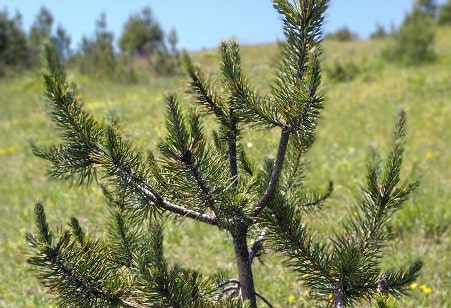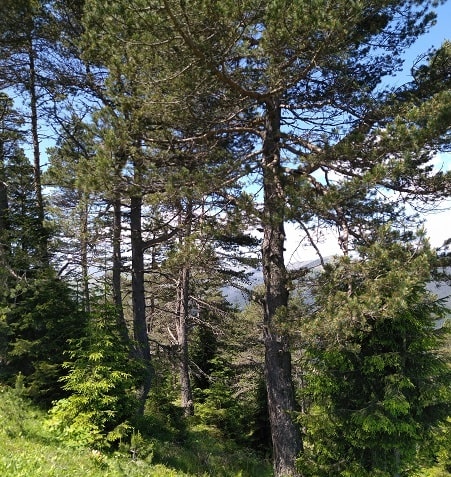Does Arizona have the largest pine forest?
Arizona does not have the largest pine forest. The largest pine forest in the United States is generally considered to be the Pinaleño Mountains in southeastern Arizona, specifically the Coronado National Forest. However, this forest is not the largest pine forest in the country overall.
The largest contiguous pine forest in the United States is the Pine Barrens of New Jersey, also known as the New Jersey Pinelands. It covers an area of about 1.1 million acres and consists primarily of pitch pine (Pinus rigida) and scrub oak (Quercus ilicifolia).
Additionally, other states such as California, Oregon, and Washington have extensive pine forests, including the massive Sierra Nevada range and the coastal forests of the Pacific Northwest.

While Arizona has significant pine forests, including the Kaibab National Forest and parts of the Apache-Sitgreaves National Forest, it does not have the largest pine forest in the United States.
Does Arizona have a lot of pine trees?
Yes, Arizona is home to a significant number of pine trees. The state has various pine species that thrive in different regions and elevations. The most common pine species found in Arizona include:
- Ponderosa Pine (Pinus ponderosa): Ponderosa pine is the most widespread pine species in Arizona. It can be found in the higher elevations of the state, particularly in the northern and central regions, such as the Coconino National Forest and the Mogollon Rim area.
- Douglas Fir (Pseudotsuga menziesii): While not a true pine tree, the Douglas fir is a common coniferous species found in Arizona. It often grows alongside ponderosa pines in higher elevations.
- White Pine (Pinus strobiformis): White pine is a native pine species in Arizona, primarily found in the higher elevations of the eastern part of the state, including the White Mountains.
- Apache Pine (Pinus engelmannii): Apache pine, also known as southwestern white pine, is found in the higher elevations of the southeastern part of Arizona, particularly in the Chiricahua Mountains and the Santa Catalina Mountains.
- Limber Pine (Pinus flexilis): Limber pine is a hardy pine species that grows at high elevations, particularly in the San Francisco Peaks area and the Kaibab National Forest in northern Arizona.

These pine trees provide important habitat for wildlife, contribute to the state’s scenic beauty, and are valued for their timber and recreational purposes. However, it’s important to note that pine tree populations in Arizona, as in any region, can be influenced by factors such as climate conditions, wildfires, and land management practices.
What kind of pine tree grows in Arizona?
Arizona is home to several species of pine trees that are well-adapted to its diverse landscapes and varying elevations. The most common pine tree species found in Arizona include:
- Ponderosa Pine (Pinus ponderosa): Ponderosa pine is the dominant pine species in Arizona. It is characterized by its tall, straight trunk, long needles in bundles of three, and distinctive orange-brown bark with puzzle-like patterns. Ponderosa pines thrive in the higher elevations of the state, particularly in the northern and central regions.
- Douglas Fir (Pseudotsuga menziesii): Although not a true pine tree, the Douglas fir is a coniferous species found in Arizona. It has flat, soft needles and cones with distinctive three-pointed bracts. Douglas firs can be found in higher elevations alongside ponderosa pines.
- Apache Pine (Pinus engelmannii): Apache pine, also known as southwestern white pine, is native to Arizona and the surrounding southwestern states. It has long, slender needles in bundles of five and cones with a thin, papery covering. Apache pines are found at higher elevations in southeastern Arizona.
- Limber Pine (Pinus flexilis): Limber pine is a hardy pine species that grows in higher elevations, particularly in northern Arizona. It has short, twisted needles and small, egg-shaped cones. Limber pines are often found in mountainous regions like the San Francisco Peaks.
- Mexican Pine (Pinus cembroides): Mexican pine, also known as Mexican pinyon or border pinyon, can be found in the southern part of Arizona near the Mexico border. It has short needles and small, edible pine nuts.
These pine tree species contribute to the diverse forests and landscapes of Arizona, providing habitat for wildlife, recreational opportunities, and aesthetic beauty.
Mappa della foresta di pino ponderosa in Arizona
Unfortunately, as a text-based AI model, I cannot provide visual content or display maps directly. However, you can easily find maps of ponderosa pine forests in Arizona through various online resources. Here are a few suggestions to find a map of ponderosa pine forests in Arizona:
- US Forest Service: Visit the website of the US Forest Service, specifically the region that covers Arizona. They often provide maps and information about the forests and their tree species. The Coconino National Forest and the Kaibab National Forest are two prominent national forests in Arizona known for their ponderosa pine forests.
- Arizona State Forestry: The Arizona State Forestry website might have resources and maps related to forests and tree species in Arizona, including ponderosa pine forests.
- Online Mapping Platforms: You can utilize online mapping platforms like Google Maps, Bing Maps, or OpenStreetMap. Search for specific regions or national forests in Arizona known for ponderosa pine forests to find relevant maps and satellite imagery.
- Research and Educational Institutions: Explore websites of research institutions, universities, or educational organizations specializing in forestry or environmental studies in Arizona. They often have resources and maps related to the distribution of tree species, including ponderosa pine.
By using these resources, you should be able to find maps that depict the distribution and extent of ponderosa pine forests in Arizona, providing valuable information about their locations within the state. Do you have pine trees in Arizona? >>
What are the pines in Arizona desert called?
In the desert regions of Arizona, particularly in the lower elevations, you will typically find pine species adapted to arid conditions. The most common pine species found in the desert areas of Arizona are:
- Singleleaf Pinyon (Pinus monophylla): Singleleaf pinyon is a small to medium-sized pine tree with short, twisted needles and small, round cones. It is well-suited to the arid and rocky environments of the desert regions in Arizona.
- Mexican Pine (Pinus cembroides): Mexican pine, also known as Mexican pinyon or border pinyon, is another pine species found in the desert areas of Arizona. It has short needles and small, edible pine nuts.
These desert-adapted pines play an important role in the desert ecosystems of Arizona, providing habitat and food sources for wildlife and contributing to the unique beauty of the desert landscapes. Where are the Arizona pine trees >>





